I must have been going to the Cutty Sark pub in Greenwich for well over 45 years. I can just about remember the first trips, where as part of a family day out to Greenwich, after feeding the squirrels in the park, walking down to the Cutty Sark ship and the old Gypsy Moth IV, Francis Chichester’s boat in which he circumnavigated the world single handed in 1967, we would walk along the river to the Cutty Sark pub for a soft drink and crisps.
The walk along the river was different to that of today. It was much quieter and the industrial nature of the Greenwich Peninsula extended up to the Greenwich Power Station. My father would tell us stories along the way. Along the narrow walkway between the River Thames and the old Royal Naval College he would tell of people being robbed along here at night with the threat of being thrown in the river if they did not comply – no idea if these stories were true, or whether they were to keep the interest in a walk, but I could imagine this happening on a dark night with mist drifting across from the river.
To get to the Cutty Sark pub, it was a walk in front of the Royal Naval College, past the Trafalgar Tavern, Trinity Hospital and Power Station. There was then a short walk through a scrap metal yard to get to the pub.
A couple of months ago, I scanned some negatives and among the photos were some I had taken in Greenwich, including these photos which were probably taken in 1986 (plus or minus a year – I did not date these negatives, but judging by other photos on the same negative strips they are from this time).
The approach to the Cutty Sark pub was through a scrap metal yard. High walls of concrete panels held back large amounts of metal on either side of a narrow walkway:
The scene today is so very different. As part of the de-industrialisation of the area, the scrap yard has been cleared, space opened up to the river on the left and flats built to the right.
The following photo shows the same scene today:
The Cutty Sark pub is in a superb location. An early 19th century building (although a pub had been on the site for many years prior to the current building), it looks out over the river, providing views to the east and west. We sat outside on a hot day in early August 2018 during the visit to take these photos, something I dream about doing again whilst writing this on a cold, grey and overcast January morning.
The current name of the pub is relatively recent, only being named the Cutty Sark in 1951 when the ship of the same name first arrived in Greenwich. Originally the pub was called the Green Man, then from 1810 it was named the Union Tavern.
After clearance of the scrap yard, the Cutty Sark pub now enjoys a large open space to the west along with a seating area directly in front of the pub.
In the above photo there is a brick wall with three plaques, a close up photo provides some detail:
The middle plaque informs that the foundation stone on the right was from the old metal recycling yard that occupied the space.
I have not been able to find any information as to the blue plaque on the left, and who was “Gordon of Greenwich”, There are English Hedonists plaques in other parts of London, created as an artwork, but the Greenwich plaque does not appear to be included in lists of these other plaques.
The area around the Cutty Sark pub is an ideal point to view the river and the western edge of the Greenwich Peninsula. The closure of industry along this stretch of the river is almost complete and it is undergoing a similar transformation to much of the rest of the river, with blocks of flats being built, the first of these can be seen in my photo earlier in the post showing the view from where the scrap yard once stood, with a tall block of flats taking up the area behind and to the left of the Cutty Sark pub.
In 1986, this was the view along the Greenwich Peninsula:
The same view today (I must get better at taking photos at the same state of the tide):
Apart from the curve of the river, the only recognisable feature in both photos is the gas holder further down the peninsula. This was originally one of a pair of gas holders, the largest of their type when constructed. One of the gas holders was demolished in 1986, fortunately one survives.
This photo from Britain from Above shows the pair of gasholders in 1924 and the surrounding industrial landscape.
Two large concrete silos can also be seen, shown again in the following photo which was taken from the edge of the scrap yard. These were the storage silos of a sugar refinery which, as with much of British industry in the past few decades, went through a number of changes of ownership before being bought in 2007 by a French company and then being closed two years later, with demolition of the silos following soon after.
The following photo from 1986 shows a view across the full width of the River Thames. The large container cranes were part of the Victoria Deep Water Wharf. Behind these are two chimneys from the old Blackwall Power Station, commissioned in 1951 and closed thirty years later.
The same view today:
The only obvious surviving features are the old brick warehouse on the left (now flats) and the tower block behind.
There are a few remaining historical features buried within the photos. The following is an enlargement of one part of my 1986 photos. Part of the old sugar refinery is to the left, but look in front of this building and along the river edge is a triangular metal structure:
The following enlargement from one of my 2018 photos shows the same area today and whilst all the factory buildings have been demolished, the triangular metal structure, now painted grey, remains.
This is part of the winding equipment that allowed undersea telecommunications cables manufactured in the buildings to the right in the 1986 photo to be transported from the factory onto ships moored in the river.
This is Enderby Wharf and is where the first cable to cross the Atlantic was manufactured with much of the world’s sub-sea communication cables being manufactured here until the mid 1970s.
The white building behind is Enderby House, built around 1830 and the only remaining building from the factory site.
Enderby Wharf was the site for a planned cruise liner terminal, however these plans have been abandoned following local campaigns against the terminal as the lack of shore power would have meant ships moored at the terminal would be generating their own electricity and therefore polluting the local area.
Although the cruise terminal has been abandoned, development of the Greenwich Peninsula continues and the river bank between the Cutty Sark pub and the O2 Dome will soon be an almost continuous line of flats.
The industrial history of the Greenwich Peninsula is fascinating. The book “Innovation, Enterprise and Change on the Greenwich Peninsula” by Mary Mills provides plenty of detail on the factories and industries that made their home on the peninsula. The Greenwich Industrial History site also has plenty of detailed information.
In the depths of January, I am just looking forward to when the weather improves and provides the opportunity to sit outside the Cutty Sark on a warm sunny day, with a beer and taking in the views of the river.

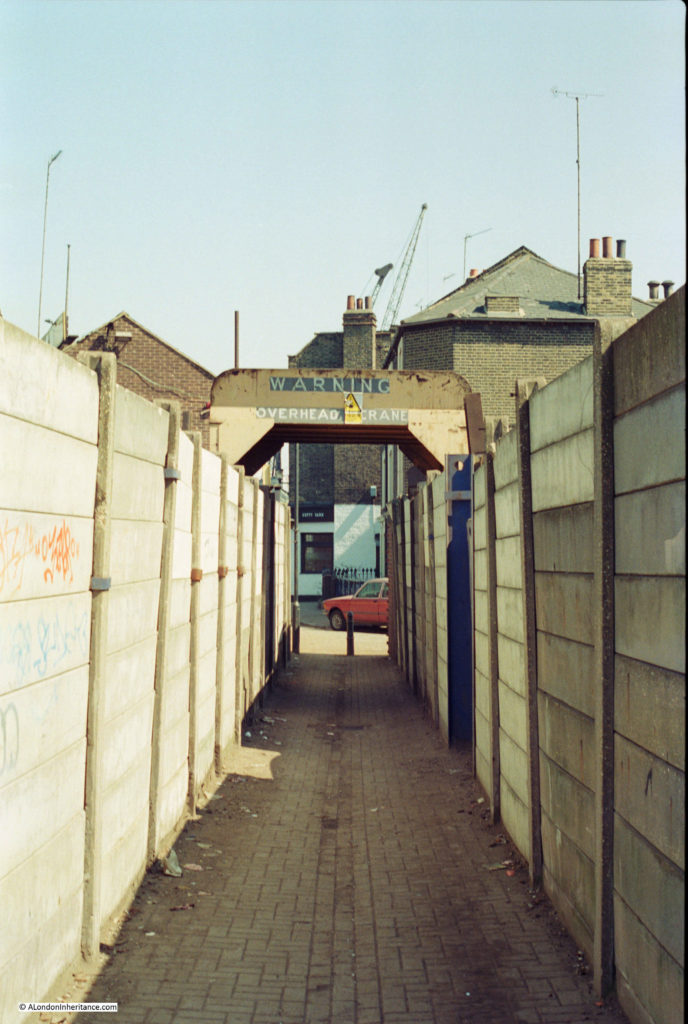
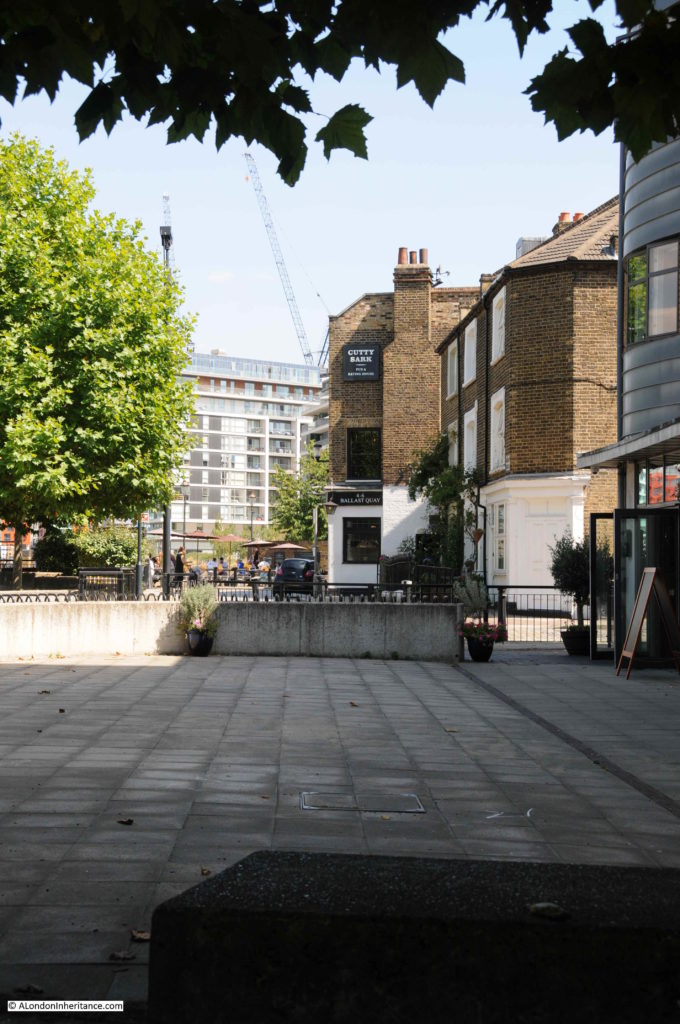
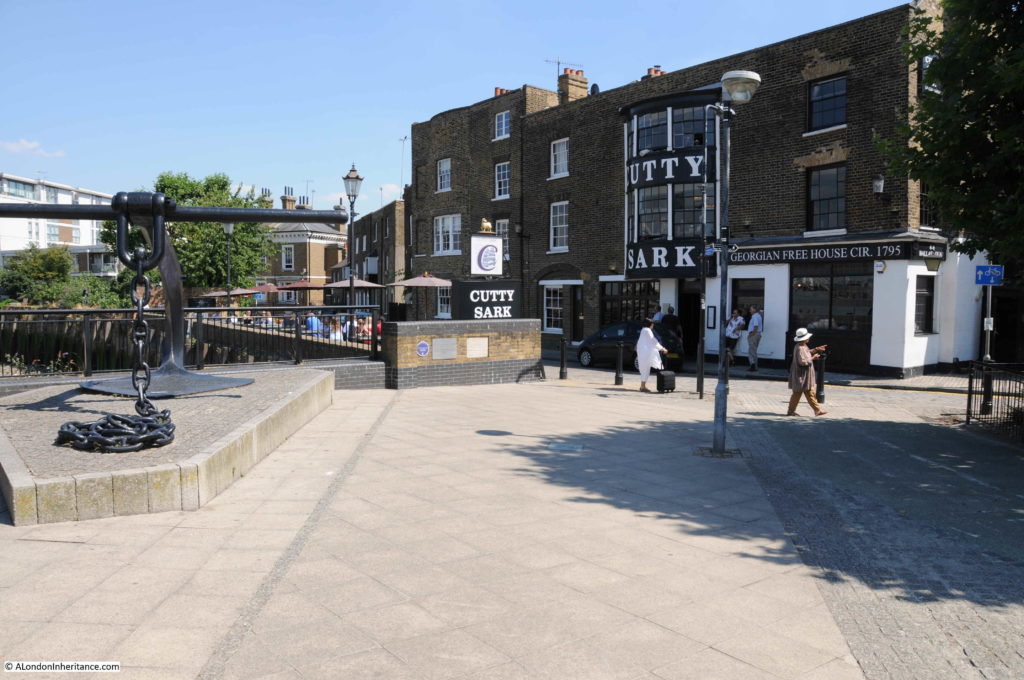
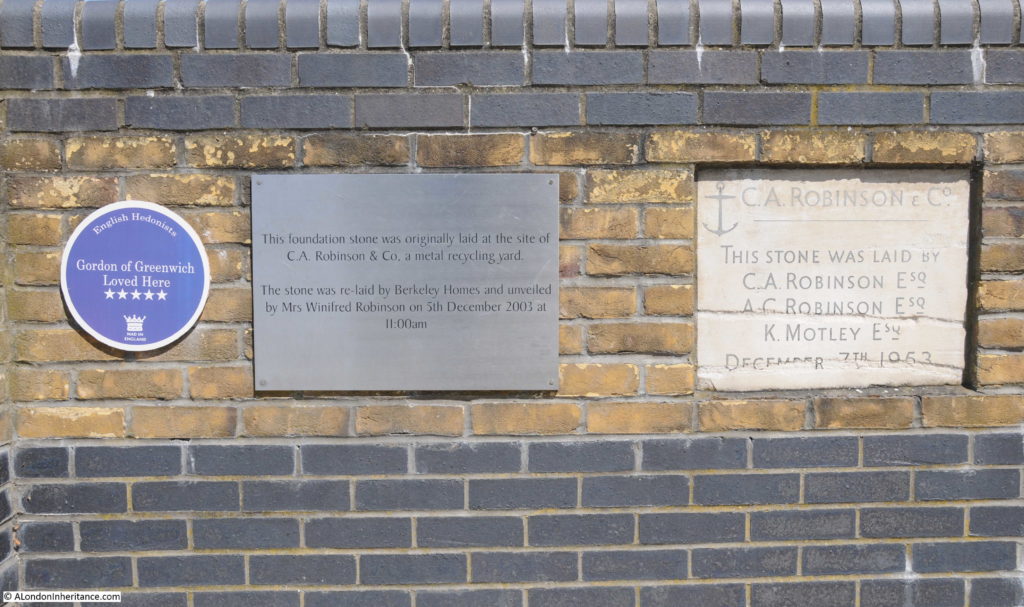
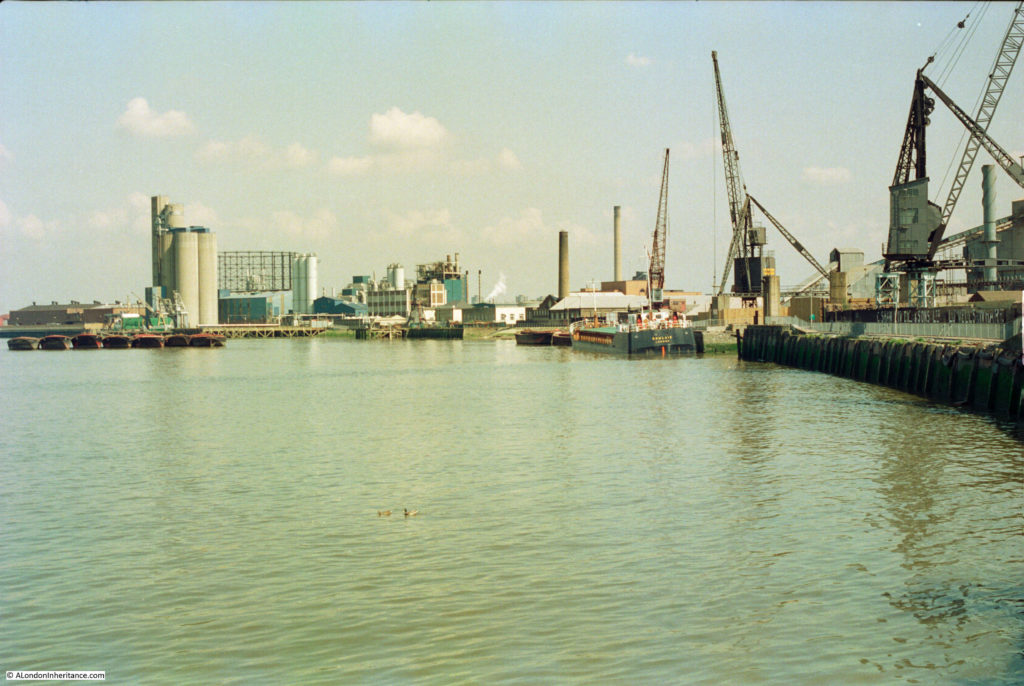
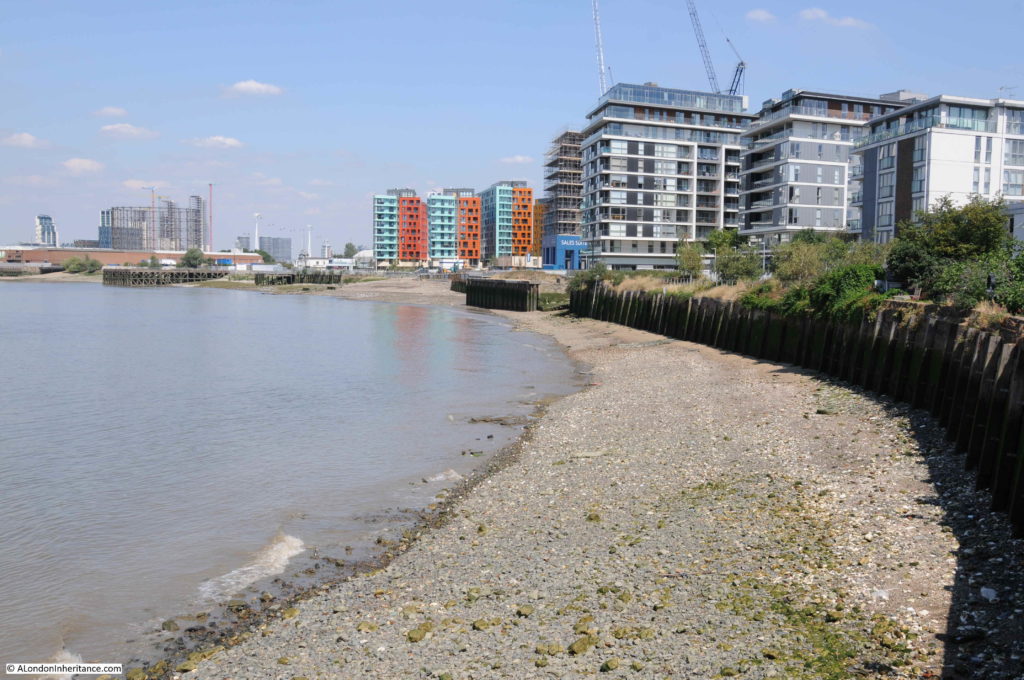
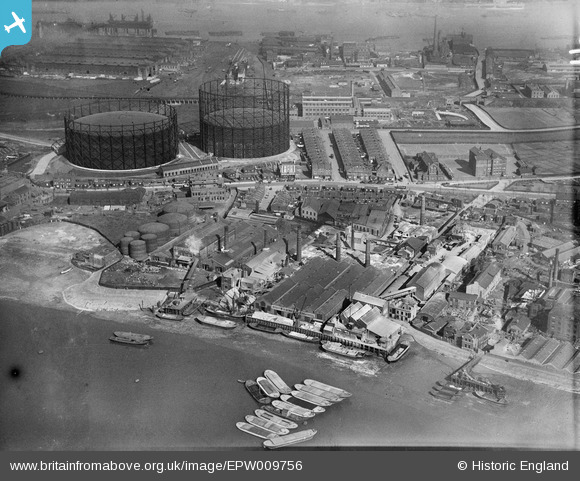
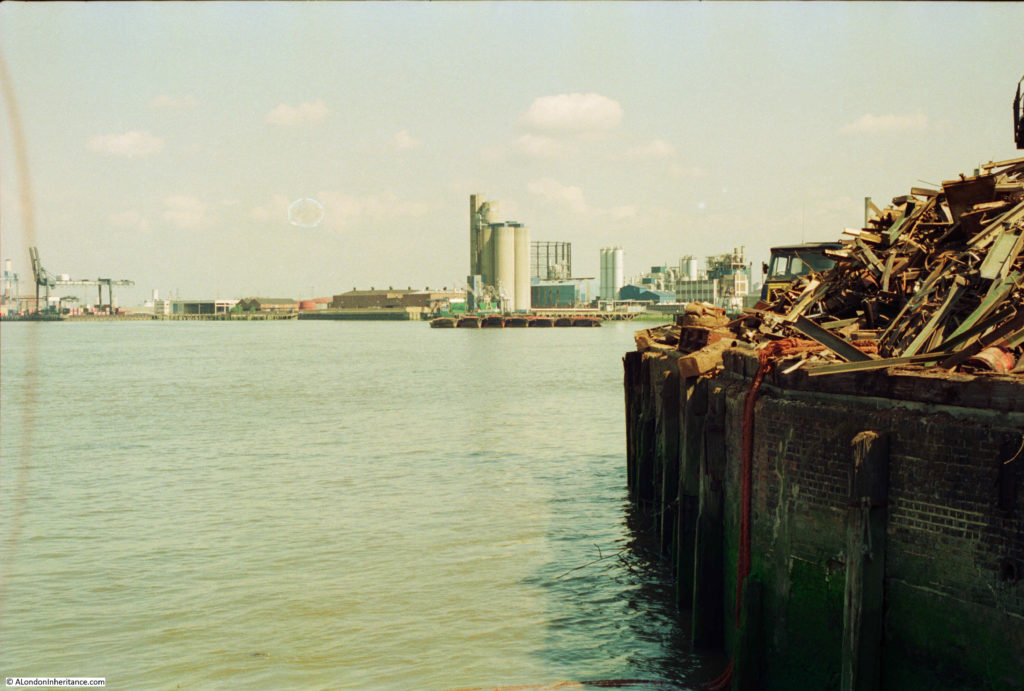
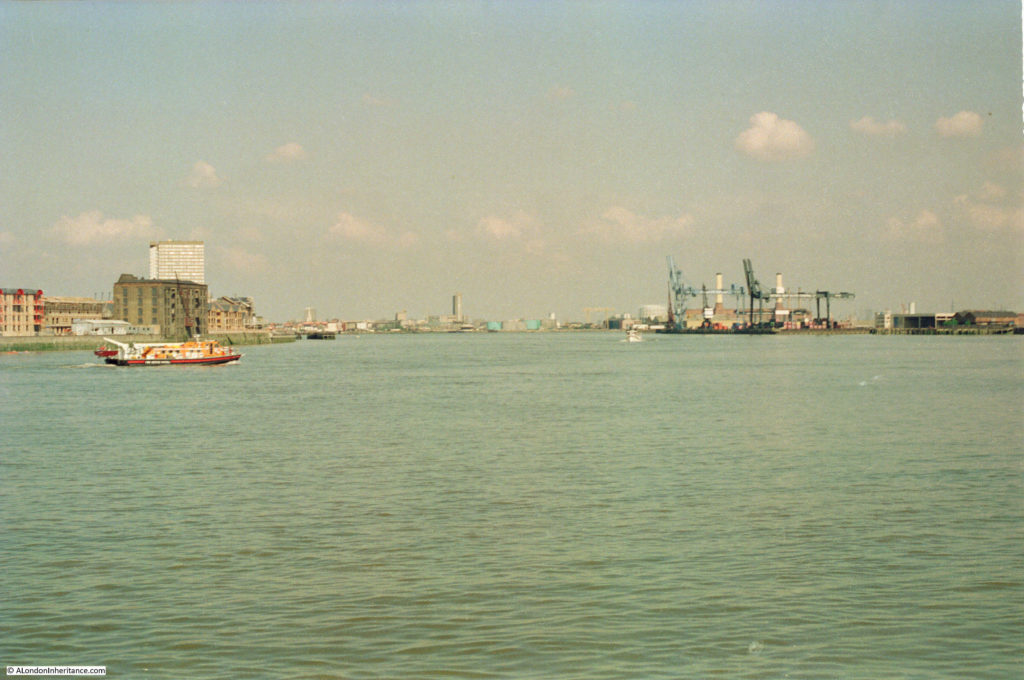
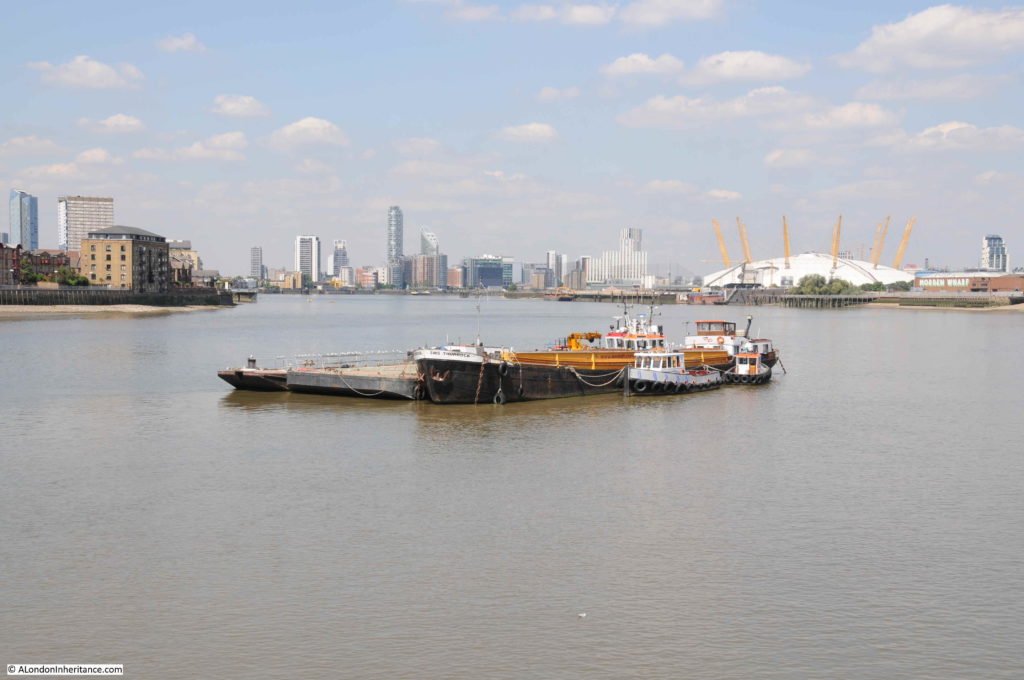
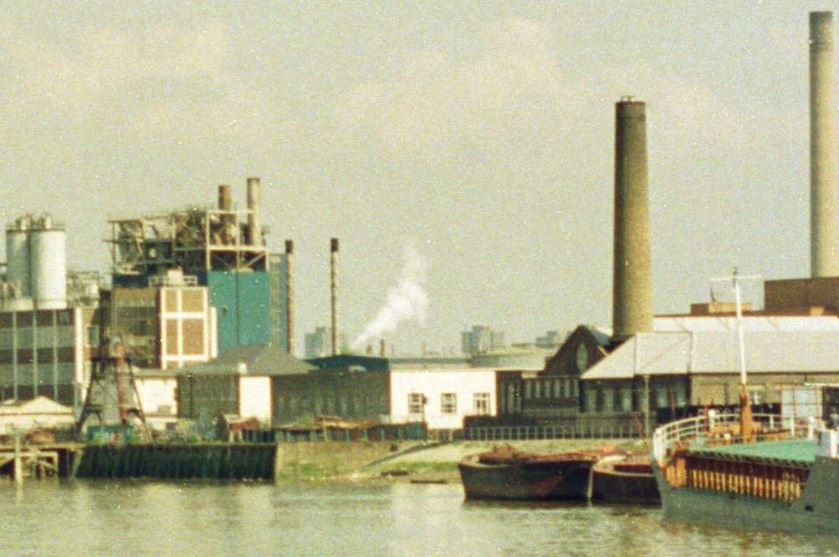
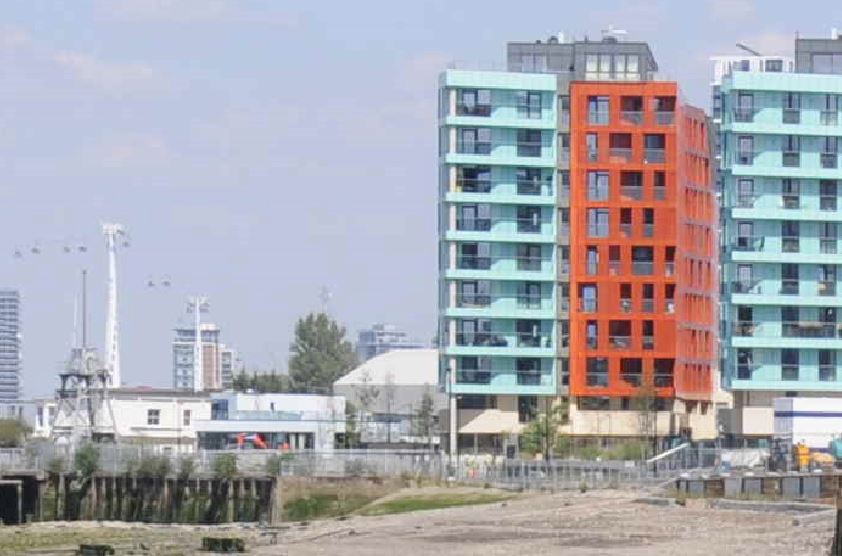
Goodness. Nice pictures. I could give you lots more detail on all that. Sime small corrections maybe sometime as well. As you finish around Enderbys perhaps I should say we have had a long running campaign on Enderby house which has just been licensed to Young’s. this is to get the telecoms heritage of the site recognised. Happy to send info if anyone wants. Or indeed about all the other riverside sites around the peninsula, web sites, books etc. Do you know what Ian Nairn said about that stretch?
Mary… Thanks for mentioning Ian Nairn’s praise of walking this stretch of the Thames from the Blackwall Tunnel entrance to Greenwich. I did so a couple years ago and was delighted to find the path largely intact, industrial sites and all, though the view across to the Isle of Dogs has certainly changed in the 50-year interim. I walked it early on a sunny July morning, ending at the Royal Naval College, and thence up through Greenwich Park to Blackheath. It was memorable. The only regret I have is that it was too early in the morning to enjoy a pint at the Cutty Sark.
And ps thanks for the plug. There is a better website which is very neglected on word press Greenwich peninsula history
In the mid sixties I worked for a firm of surveyors in the west end doing rating revaluation appeals on commercial properties – one of which was Tunnel Refineries who operated the refinery site mentioned above. I seem to recall spending several days slipping and sliding around the buildings (everything was covered in a sticky solution of glucose), especially in the steel structured building shown in the penultimate photo.
Good post today,Admin. Did you see that small garden next to the seating area? Very clever how it has been planted with so many different types. I seem to remember a dedication there to working animals?
As for looking forward to enjoying a drink while watching the river,well,aren’t we all!
Thanks for all this – and also to Mary who has reminded me that one of the most fascinating books I’ve ever read was the story of the first two transatlantic telegraph cables. There is a 1959 book about it available as a big 30Mb download on the web https://monoskop.org/images/9/9e/Dibner_Bern_The_Atlantic_Cable.pdf
There might be better accounts… I’m not an expert – but this had me transfixed fora while.
The scrap yard was still there last time I visited the Cutty Sark so clearly time for a visit. Hope you have time to visit the Tunnel to the Isle of Dogs. I lived in Malabar Point on the latter but we used to walk over to Greenwich for a night out.My abiding memory was that Greenwich and it’s funny old fashioned shops always seemed so dusty. A lost world you’ve brought back to life.
A fascinating post that brought back many memories, I grew up and worked in and around Greenwich, my Aunt lived in the old flats opposite the pub. I remember playing on the muddy shore line as a kid and coming home filthy from the mud, I also remember eating pie and mash in the old pie shop near the pub.
I too hope one day to sit outside the Cutty Sark with beer in hand and take in the ever changing views, cheers!
I found this very interesting website about the history of CA Robinson and Co
http://www.ballastquay.com/c-a-robinson–co.html
Hello ,best wishes for 2019!
I find your site really interesting.This last post on Greenwich in particular,it’s my favourite spot in London since I have discovered the amazing foot tunnel: at the time I was living in Paris where you can’t walk under the Seine (only in the underground.)
I spent 3 years in London from 1992 to 1995 ,and once we decided to try all the Thames crossings in London.Ferry,tunnels and bridges.There was no cable car at the time.So I enjoyed reading your posts on the Thames and I will certainly try a trip along the Thames next time I visit London.Of course there is much more to see in Greenwich and London than the bridges and tunnels .. London is such a wonderful city .I try to visit at least every other year , now that we are back in Versailles.
Do you know anything about the history of Seven Kings (where we were living ) and Goodmayes (where I was working).?My daughter was born there (King George Hospital). I found old photos on the internet but not many facts…
Thanks again for sharing all these amazing photos with us.
Gordon of Greenwich was a hairdresser from Greenwich who died a few years ago. He work in the hairdressers one the vine way system and then on Trafalgar road well know in greenwich
Alas I knew him well….well, way back that is. Hadn’t seen him for years…i have an old picture of him…
Thank you again for insights to a very recent past. As I`m not able to see in person the modern views it shows such change in my lifetime. Remember well visiting the Cutty Sark ship in the 1970`s.
A tiny tiny correction – the two chimneys are not Blackwall Point Power Station but Blackwall Power Station. Blackwall Point was in Greenwich near where the Pilot Pub is now – and it only ever had one chimney.
If you can stand my boring reminiscences – those chimneys – I was sitting in The Gun on the Isle of Dogs one Sunday and the person I was with said, ‘look police vessels – they are closing the River’ – and I said ‘never mind that got to get the car off the yellow lines before I am nicked’ – so off I went . When I got back – five minutes at the most – guess what? The power station chimneys were gone and there was a big cloud of dust instead.
Mary, thanks for the correction, I have updated the post. Always happy to get corrections as one of the reasons I write the blog is to learn, so corrections and updates help.
Good story about the chimneys – I can imagine the frustration after seeing these had gone.
Very interesting article. I found this on line and I think this film may have been about Gordon Of Greenwich. They’re remembering him, in front of the Cutty Sark pub.
https://youtu.be/dd4o2d–e1w
Thank you for your fascinating blogs. I love the river and all its environs. Particularly the stretch from Bermondsey Wall to Deptford. One of my favourite places is Brunswick Quay on Greenland Dock, a fabulous place. I wish I’d seen it in its heyday but it is beautiful now. Perhaps you could write about the area, I’d love to know more of its history.
Gordon was very treasured friend in Greenwich to many of us. Mr Greenwich as he was otherwise known as, he passed away subddenly a few years ago and friends put up the plaque to remember our dear friend.
Your article was very interesting, thank you.
Gordon was one of my favourite people ever, we spent many drunken nights around London together as MC Qhunt and the average white DJ. I miss that lovely man.
Takes me Back especially the little alley you had to walk through to get the the Cutty Sark.
Re who was Gordon…he was the Glue that held old Greenwich together. Rolling the 5 star Way
Hello, I sent an email to this address about the 29th December 1940 but as I haven’t had a reply I wonder if the email reached you.
My father served on the AFS and was posted up on St. Paul’s before 29/12/40 and was on duty in Ave Maria Lane that night. A photo of him and two of his team is often published in books – probably taken by Herbert Mason who was around on that same night. He knew a number of the St. Paul’s Watch and spoke of his admiration for the work they did and also the Dean wjo he had a number of conversations with. Water pumps were positioned around the Stone Gallery and I have other information which may be of interest.
Christopher Hoefkens,
The Gordon referred to on the plaque is my old schoolmate, Gordon Oswald, who was a hairdresser at “Bavardez” in Trafalgar Road.
He sadly died suddenly in December 2016, aged just 52.